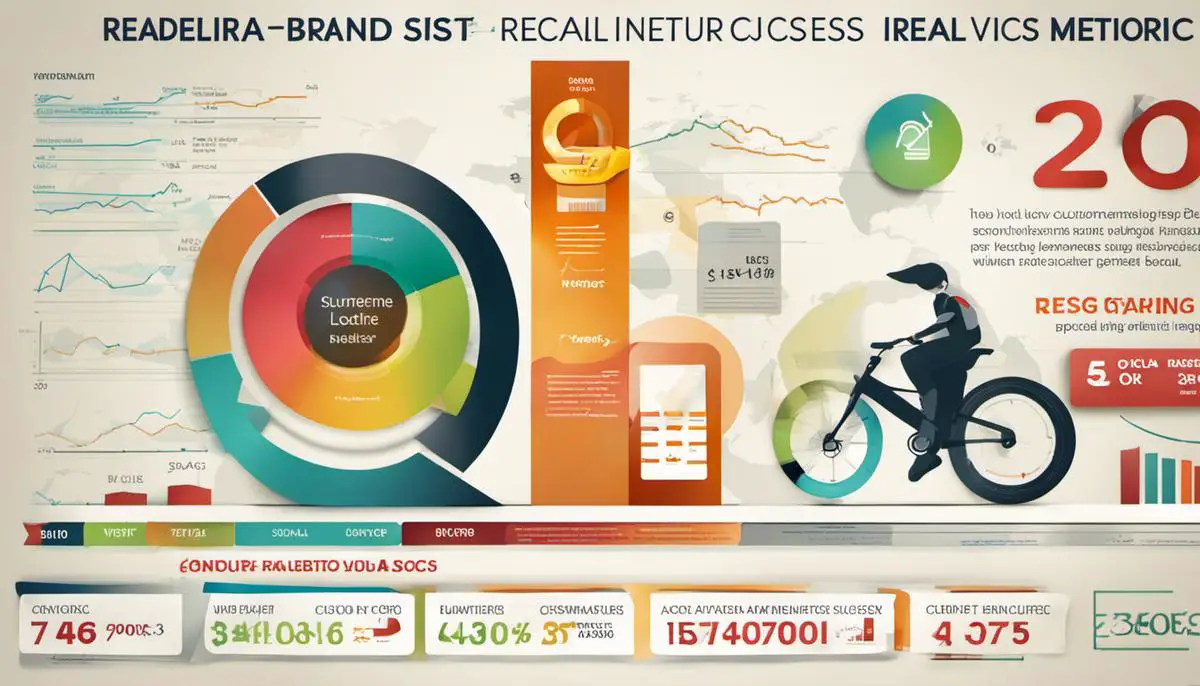In the dynamic world of business, the power and impact of a well-established brand cannot be overstated. To achieve success in a competitive marketplace, particularly when operating a seven-figure business, a robust, consistent, and captivating brand is vital. This piece seeks to decode the complex process of branding, from understanding brand positioning and developing a potent brand identity, to crafting unique value propositions and ensuring brand consistency across myriad platforms. By examining successful case studies and industry best practices, this exploration lends insight into the art of creating and managing a brand that quite literally makes a mark.
Understanding Brand Positioning
Understanding Brand Positioning
Brand positioning, as a critical dimension of developing a seven-figure business strategy, allows businesses to differentiate themselves from competitors in a crowded marketplace. At its essence, it is all about establishing a unique impression in the minds of customers. Brand positioning is not simply a slogan or tagline; it is an intangible feeling or perception of the brand, product, or service that customers associate.
For seven-figure businesses, brand positioning is significant to both attract and retain consumers, as having a clear and compelling positioning sets them apart and establishes their distinctive identity. It is a powerful tool because it communicates the brand’s promise and value proposition succinctly and articulately. This can ultimately influence a potential buyer to choose one product over a competing one.
The Process of Positioning
Brand positioning is a continuous process rather than a one-off exercise undertaken by seven-figure businesses. The process includes identifying the brand’s core target audience, assessing the competitive landscape, defining uniqueness in the brand’s offerings, and continuously communicating this distinguished proposition.
It begins with a comprehensive understanding of the marketplace and the business’s performances within it, and then considering the differentiating factors in terms of the brand’s features, benefits, quality, price, and customer service. Effective positioning thus allows a business to permeate the collective consciousness of customers with its distinctive value.
Case Studies
To provide a clearer understanding of brand positioning, consider the instance of Apple Inc., a globally recognized seven-figure business. Apple’s branding strategy focuses on the promise of innovation, impeccable design, and superior functionality. The firm’s distinctive communication strategy emphasizes these aspects, positioning the brand as a purveyor of harmonious integration of technology and aesthetics. This distinct position in the competitive market has continued to attract a loyal customer base, ensuring a strong market presence.
Just as Apple has successfully positioned itself, other businesses can experience similar success through effective positioning. It is all about understanding the specific market and then offering a unique selling point that caters to the unique needs of the target consumers.
Unlocking the Power of Brand Positioning
As the backbone supporting the growth and profitability of a seven-figure business, brand positioning cannot be underestimated. When masterfully handled, it can etch a lasting image in consumers’ minds, fostering a more profound connection and boosting brand loyalty. This strategic move is what differentiates thriving businesses from their competitors.

Developing a Strong Brand Identity
Decoding Brand Identity: What It’s Made Of
Establishing a robust brand identity is crucial in steering a seven-figure business to success. This carefully crafted identity distinguishes a business from its rivals in the market. Elements comprising a business’s brand identity include its name, logo, color scheme, tonality, and tagline.
The business name is the foundation of brand identity. It’s the initial point of contact with audiences, hence it should mirror the business’s core values, mission, and vision.
Attached to the name, the logo contributes to visual familiarity. It must stand out, be effortlessly discernable, and adaptable to various media platforms.
Another pivotal component of brand identity is a business’s color scheme. Colors are known to trigger emotions and bear specific meanings. Therefore, the chosen color combination should coincide with the message the business aims to impart to its audience.
Consistency in the brand’s tone of voice is essential in painting a unique, coherent image. Is the brand manner amicable? Commanding? Cerebral? The selected tone must resonate with the audience and remain consistent across all platforms.
Lastly, a tagline, although optional, can bolster the brand by succinctly encapsulating its unique features or the primary benefits of its product or service it offers.
Storytelling as a Branding Tactic
Storytelling is a powerful tool in establishing a brand identity. It is said that while facts can provide information, stories provide insight and tap into emotions. This often leads to a deeper, more personal connection between company and customer.
For a successful brand story, it’s important to clearly communicate the company’s mission, its history, and its vision for the future. These components not only show what the company stands for, but also invite customers to be a part of the journey moving forward.
Brands should also remember to engage with their customers on a personal level. This involves sharing behind-the-scenes looks into the company, highlighting real customer testimonials, and actively engaging with audiences on social media.
Creating A Cohesive Brand Identity
Implementing and maintaining a cohesive brand identity is essential once the key elements have been developed. Each element should reiterate the others in order to exude an uncomplicated, cohesive impression of the brand.
It is just as vital to be consistent across all customer touchpoints, be it the company’s website, social media platforms, packing, or one-on-one interactions. Adherence to consistency fortifies brand recognition and paves the way for staunch customer loyalty.
For those conducting seven-figure businesses, this approach should be top of mind. The reason being, a well-founded and powerful brand identity sways customer perspectives, augments credibility, and fuel business expansion ultimately.

Value Proposition and Creating a Unique Selling Point
Grasping Value Proposition and Distinguishing Features
The Value Proposition refers to the one-of-a-kind mix of products or services a company offers its target users. Essentially, it is a statement that enlightens how a brand’s range differs from, and trumps, its competition. The unique selling point, alternatively, is a single, assertive characteristic that sets a business apart from its competitors.
Considerably, value proposition holds immense importance for seven-figure businesses since targeted customers have a wide array of choices. Therefore, to raise your brand’s prominence above the rest, you must create clear and persuasive unique value propositions that job on aspects different from the competition.
Simultaneously, it is paramount to comprehend the target demographic; their desires, needs, obstacles, interests, and behavior. The idea is to tailor a message that tells this demographic how the company’s offerings can uniquely cater to their requirements.
The Process of Creating a Unique Selling Point
Creating a unique selling point involves several essential steps:
- First, extensive market research is conducted to gather insights about the industry, competitors, and target customers. The data collected provides a wealth of knowledge about what customers are looking for, the existing offerings in the market, and where the company can carve out a distinct niche.
- Next, brainstorm and determine the unique attributes of the business. What does the brand provide that no one else in the industry does? This could relate to the product characteristics, service level, price range, or any other factor which is relevant to the target customers.
- Lastly, amalgamate the unique attributes into a concise and compelling statement that clearly articulates why the company’s products/services are unique and beneficial to the consumers. This becomes the Unique Selling Point (USP). The USP should be communicated across all marketing channels to consistently establish the brand’s differentiation.
Unpacking Stellar Branding Strategies in Seven-Figure Businesses
With a focus on seven-figure businesses, numerous brands have adeptly designed potent Unique Selling Propositions (USPs). A standout example is Apple. Rather than focusing on being the most affordable or boasting the highest specs, Apple cultivates its brand around unmatched design, simplicity of use, and a superior user experience. This ethos is integrated into all its branding and marketing endeavors and has effectively distinguished Apple in the fiercely competitive tech sector.
Another meritorious player is Zappos, a popular online shoe retailer. Anticipating customers’ concerns about purchasing shoes online without trying them first, Zappos counters this by offering free shipping and returns, even extending to a 365-day return policy. This USP not only soothes customers’ anxieties but also solidifies Zappos’ reputation as a customer-centric business.
For seven-figure entities, the branding process is never static but a continuous loop. Crafting a unique value proposition and selling point becomes pivotal in fortifying the brand, enticing and retaining consumers, and thus, facilitating consistent revenue growth.

Brand Consistency Across Platforms
The Vital Role of Brand Consistency Across Multiple Platforms
For prospering seven-figure businesses, brand consistency is of paramount importance. The brand is the embodiment of your company, representing its face and voice. It is, therefore, essential to uphold this consistency across all platforms. Adhering to this ensures better brand recognition, augments trust, and bolsters customer loyalty. Through consistency, businesses can amplify their brand image and perceived quality, paving the way for stronger brand recognition and resonance.
The Impact of Inconsistent Branding.
Inconsistent branding, on the other hand, chances confusing or alienating your target audience. If your brand is not consistent across all platform, customers may struggle to understand your brand’s values and messaging. This can lead to confusion, decreased trust, and even lost sales.
Achieving Brand Consistency: Defined Brand Standards.
Achieving brand consistency requires a detailed and well-thought-out brand guideline or brand standards document. This comprehensive guide should encompass not only your brand’s visual elements, such as colors and logo usage, but also your brand’s voice, messaging, and overall brand personality. This tactic ensures that regardless of the platform, your brand is recognized and its message is clear.
Synchronizing Brand Elements Across Platforms.
Once you have a set of brand guidelines, the next step is to apply them consistently to your channels. This means your website, social media platforms, television advertisements, and print materials should all offer a similar look and feel. This also applies to the copywriting style used in your content. This allows for a seamless experience for your audience, regardless of the platform they use to interact with your business.
The Power of Consistency in Social Media.
Social media platforms are vital in today’s digital age. Platforms such as Facebook, Instagram, Twitter, and LinkedIn offer businesses an opportunity to interact directly with their target audience. Therefore, maintaining a uniform look, feel, and tone across your social media profiles can significantly improve brand recognition and build a solid reputation.
Monitoring and Adapting Your Brand.
Consistency shouldn’t mean stagnation. To remain relevant, brands need to evolve with their audience and market trends. Monitoring your brand across all platforms enables you to spot any inconsistencies and afford you the opportunity to adapt. Tools like brand management software can help streamline this monitoring process and maintain brand consistency.
The Role of Employees in Brand Consistency.
Lastly, it’s important to consider your employees’ role in maintaining brand consistency. They should be trained and encouraged to understand your brand values, voice, and visual elements. This ensures that any public-facing element of your business remains consistent, whether it’s a customer service representation or a sales pitch by your team.
One of the crucial factors that can exponentially enhance a seven-figure business’s performance is establishing consistency in branding across every platform. This not only bolsters the business’s reputation but also instils trust in customers, thereby contributing to an increased sales volume.

Measuring and Evolving Your Brand
Quantifying Brand Success: The Blend of Qualitative and Quantitative Metrics
Seven-figure businesses utilize several determining metrics to quantify the effectiveness of their brand status. These comprise an array of benchmarks such as the extent of brand recollection by the customers, the scope of the brand’s reach, rates of customer satisfaction, and the revenue that can be directly linked to branding undertakings. These companies employ an integration of both qualitative and quantitative techniques to obtain tangible outcomes. Quantitative techniques focus on business KPIs like brand loyalty rates, conversion rates, or net promoter scores. Qualitative techniques, on the other hand, harvest insights from customer feedback, surveys, or focus group studies.
Brand Audits: Roadmaps to Success
Regularly performing a brand audit is another tactic employed by seven-figure businesses. A brand audit is a thorough examination of a brand’s positioning in the market, the strength of its products or services, and its overall reputation. By tracing back to the company’s sales and marketing strategies, brand auditing can uncover effective and ineffective branding strategies. These audits can reveal valuable insights into the current public perception of the brand, competitors’ position, and market trends. Audit findings guide strategy pivot points and encourage improvements to be made to maintain brand relevance and competitiveness.
Leveraging Data in Branding Decision Making
Another aspect of branding tactics is leveraging data in decision-making processes. Seven-figure businesses often use data analytics to understand their audience on a deeper level and tailor their messaging accordingly. Analytics platforms can provide consumer behavior patterns, demographic information, preferred content types, and many more specifics that can inform brand strategies. Data-driven decision making is key in ensuring business moves are reliably informed and designed to resonate with the specific target audience.
Staying Current while Protecting Brand Identity
The business landscape is dynamic, and with changes in market trends, customer preferences, and technology, it’s crucial for a seven-figure business to continuously evolve its brand. However, the evolution should not be at the expense of the core identity and values that the brand has set forth. Maintaining balance between innovation and core identity is one of the biggest challenges in branding. By establishing a strong and clear brand guideline, businesses can ensure all changes in the branding activities still align with the larger brand strategy and vision.
Assessing the Need for Brand Pivot
While brand consistency is crucial, there will be times when a pivot is necessary for the survival and growth of the brand. Timely changes to branding strategies could be triggered by factors such as a significant change in the market, a shift in audience demographics, or a need to overcome negative publicity. Monitoring key performance indicators closely and regularly can reveal clues for when a pivot might be necessary. These indicators can be a falling net promoter score, decline in brand relevance score, decreased market share, or even an ongoing societal trend that the business can’t afford to ignore.

Navigating the landscape of branding is no small task, particularly for a seven-figure business competing in this fast-paced commercial world. The longevity of a brand hinges on its ability to maintain relevance, while also staying true to its core values. It relies on a deep understanding of its target audience, a clear and compelling value proposition, and the consistent presentation of its identity across all touchpoints. Measurement and evolution become the linchpins of enduring success, providing vital signs of when it’s time to grow or fine-tune. As demonstrated, branding is more than just an aesthetic or a logo design; it is a strategic tool that, when wielded effectively, can transform a business into a market leader and trendsetter.
Writio: Your AI pal for top-notch content creation. This article was delightfully crafted by Writio – the genius behind the keyboard.
No responses yet